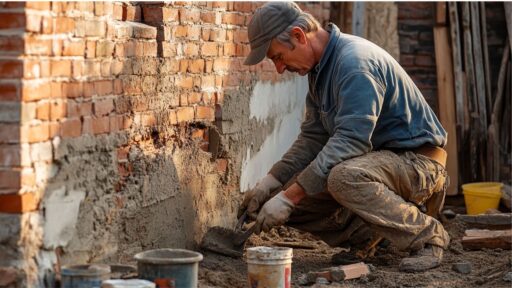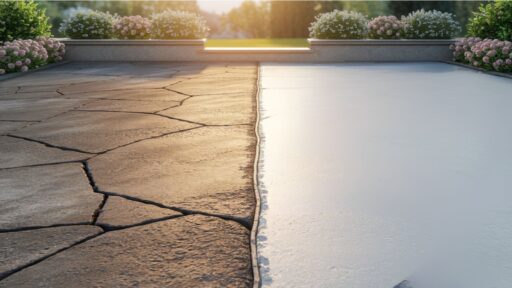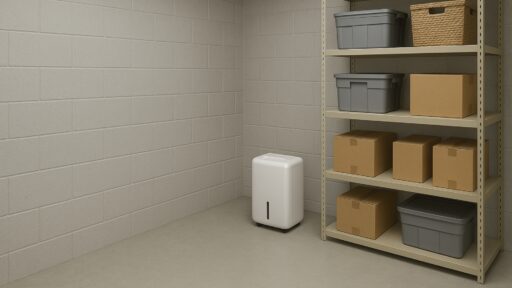Have you noticed cracks in your brick foundation or wondered why some older homes last forever?
Brick foundations are structural supports made from fired clay bricks that support the weight of your home.
These durable foundations are commonly found in homes built before the mid-twentieth century in many regions.
Timely brick foundation repair is crucial for home safety, as small issues can quickly escalate into costly disasters.
Proper repairs also protect your property value and prevent water damage that costs thousands later.
Today, we’ll cover everything you need to know about identifying foundation problems and understanding the repair options available.
You’ll learn how to prevent future issues through proper maintenance techniques.
What Is a Brick Foundation?
Brick foundations are load-bearing structures built from fired clay bricks that hold up the weight of your house.
There are two main types you’ll encounter – solid brick and brick veneer foundations.
Solid brick foundations utilize multiple layers of bricks for strength, whereas brick veneer features brick over a concrete base.
These foundations are commonly found in older homes built before the 1950s in many areas.
You’ll see them mainly in regions like the Northeast and Midwest, where brick was readily available.
The construction methods involve laying bricks with mortar joints, creating sturdy walls that last for decades when maintained.
Think about how many historic buildings still stand strong today thanks to quality brick construction.
Most homeowners are surprised by how durable these foundations can be with proper care over time.
Common Causes of Brick Foundation Damage
Brick foundations face several challenges that can cause serious problems over time if not addressed properly.
Most foundation problems develop slowly, making them easy to miss until the damage becomes obvious.
- Soil shifting and foundation settling occur when the ground underneath your home moves or compresses naturally over time.
- Poor drainage and water intrusion happen when gutters fail or grading directs water toward your foundation walls.
- Tree root pressure or nearby construction can exert pressure against foundation walls, causing cracks or movement.
- Freeze-thaw cycles in cold climates expand water in mortar joints, causing bricks to crack and separate.
- Age and normal wear gradually weaken mortar joints, allowing moisture to penetrate brick foundation walls.
These problems often work together to create more serious foundation issues that affect your entire home.
The good news is that catching these causes early prevents most major foundation repairs later.
Types of Brick Foundation Repairs
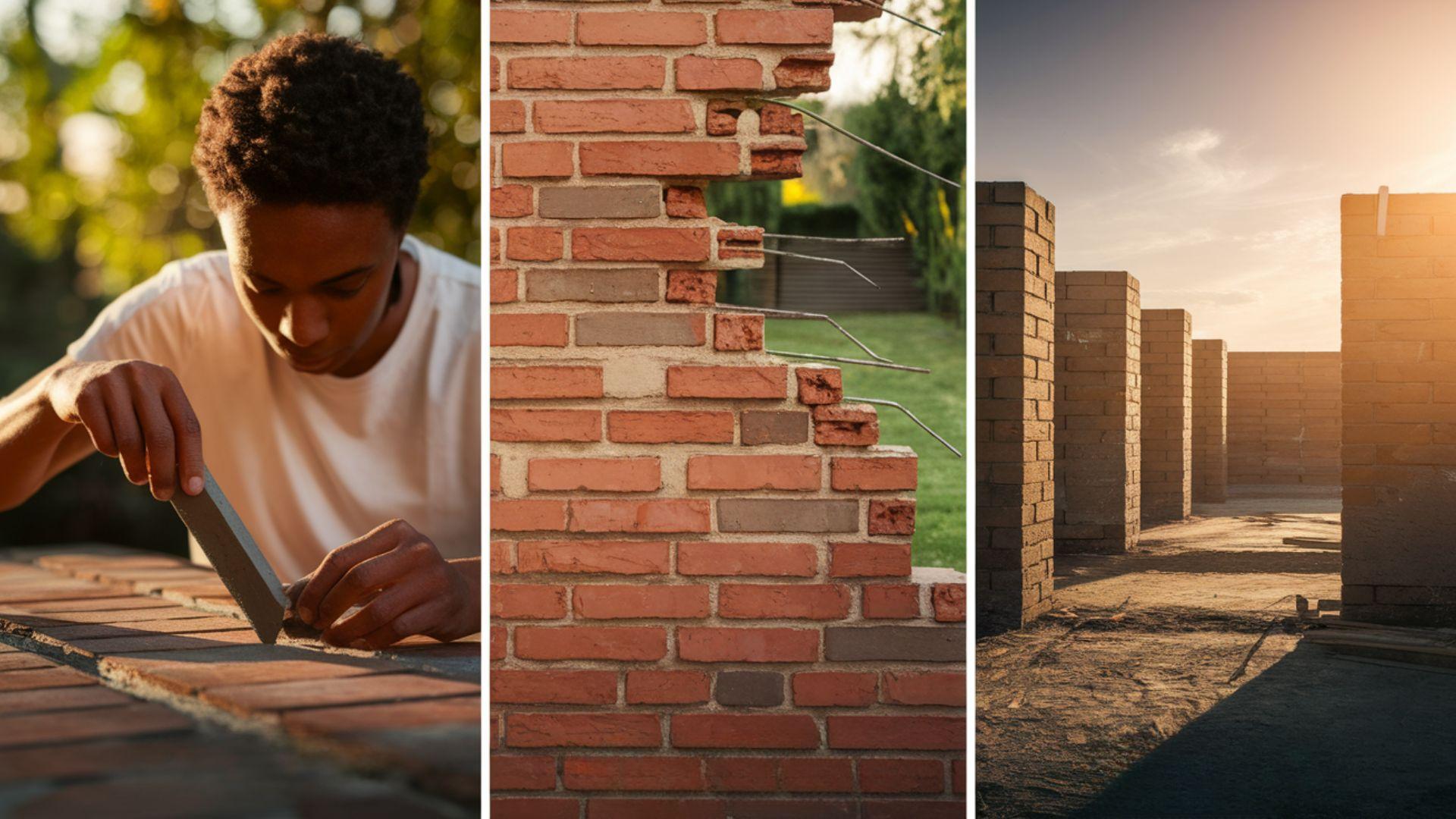
Brick foundation repairs fall into three main categories, based on the severity of the damage and the complexity required.
Understanding these repair levels helps you know what to expect and budget appropriately for your project.
Most foundation problems start small but can quickly become major issues without proper attention.
1. Minor Repairs
These repairs address surface-level damage that doesn’t threaten your home’s structural integrity but needs attention to prevent worsening.
Below are some methods used to fix these common foundation issues that homeowners often encounter.
- Tuckpointing removes old, damaged mortar from joints and replaces it with fresh, matching material.
- Mortar patching fills small gaps and cracks to prevent water penetration and further deterioration.
These simple repairs can extend your foundation’s life by many years when done properly.
Most homeowners can learn these techniques with practice and the right guidance from professionals.
2. Moderate Repairs
These repairs tackle more serious structural issues that affect your foundation’s stability and require professional expertise.
Here are some methods used to fix moderate foundation problems before they become major disasters.
- Crack stitching uses metal ties inserted into mortar joints to hold cracked walls together permanently.
- Wall bracing installs steel beams or support systems to provide additional structural stability and prevent bowing.
Professional installation ensures these repairs meet building codes and provide long-term structural protection.
Most moderate repairs come with warranties and prevent the need for more expensive major work.
3. Major Repairs
These repairs address severe structural damage that threatens your home’s foundation and requires immediate professional intervention.
Below are some methods used to fix major foundation problems that affect your home’s structural integrity.
- Underpinning strengthens foundations by extending them deeper into stable soil or adding new support elements.
- Foundation rebuilding completely reconstructs severely damaged sections with new materials and proper construction techniques.
Major repairs are expensive but necessary to prevent foundation collapse and protect your family’s safety.
These projects typically require permits, professional engineering, and can take weeks to complete properly.
Tools and Materials Needed
When planning for a brick foundation repair, it helps to understand the typical costs of basic tools and materials.
Most of these items are affordable and easily available at hardware stores or online.
| TOOLS/MATERIALS | ESTIMATED COST (USD) |
|---|---|
| Pointing trowel | $19–$25 |
| Joint raker | $3–$16 |
| Wire brush | $2–$10 |
| Mortar mix (60 lb) | $6–$20 |
| Safety goggles | $3–$10 |
| Work gloves | $6–$20 |
| Cold chisel | $5–$15 |
| Masonry hammer | $10–$25 |
Total Estimated Material Cost: $54 to $141.
These prices are estimates for entry-level homeowner repairs, and buying quality tools can save time and effort during the repair process.
NOTE: Material costs only, excluding labor. Basic brick foundation repair using tuckpointing methods: prices may vary by location and time.
Step-by-Step Process: Brick Foundation Repair
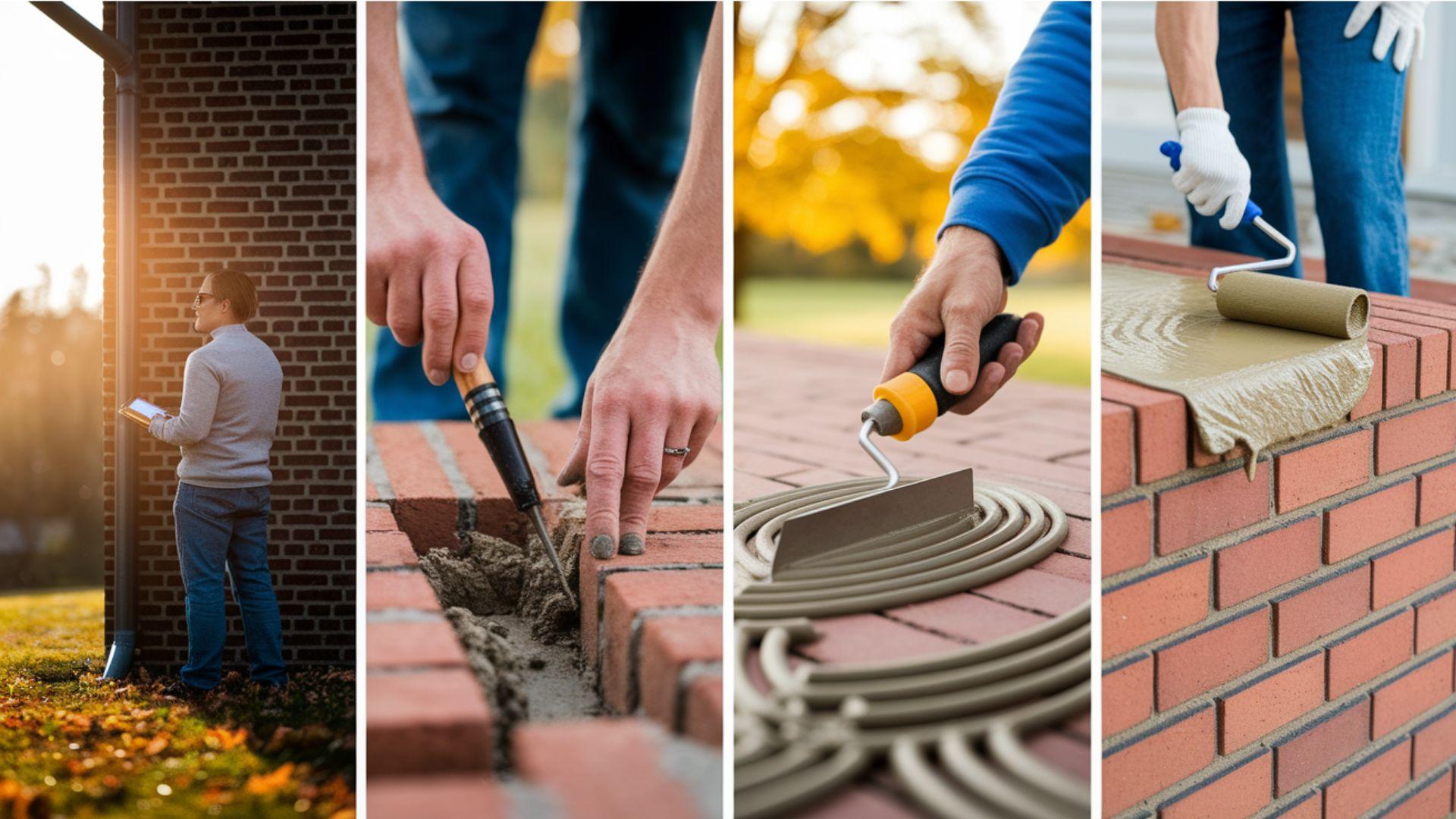
Brick foundation repair follows a proven process that ensures lasting results and prevents future problems.
Following these steps in order helps you complete repairs properly and safely every time.
- Inspection and damage assessment: Examine the entire foundation for cracks, loose mortar, and structural problems that need attention.
- Cleaning and preparation: Remove old mortar, debris, and loose materials using wire brushes and appropriate cleaning tools.
- Crack repair or mortar replacement: Fill cracks and replace damaged mortar joints with fresh materials that match existing work.
- Reinforcement (if needed): Install metal ties, braces, or other support systems for walls showing structural weakness.
- Sealing and waterproofing: Apply protective coatings to prevent water damage and extend the life of your repairs.
Taking your time with each step ensures your brick foundation repair lasts for many years ahead.
Most foundation problems can be prevented with proper repair techniques and regular maintenance over time.
When to Call a Foundation Repair Specialist?
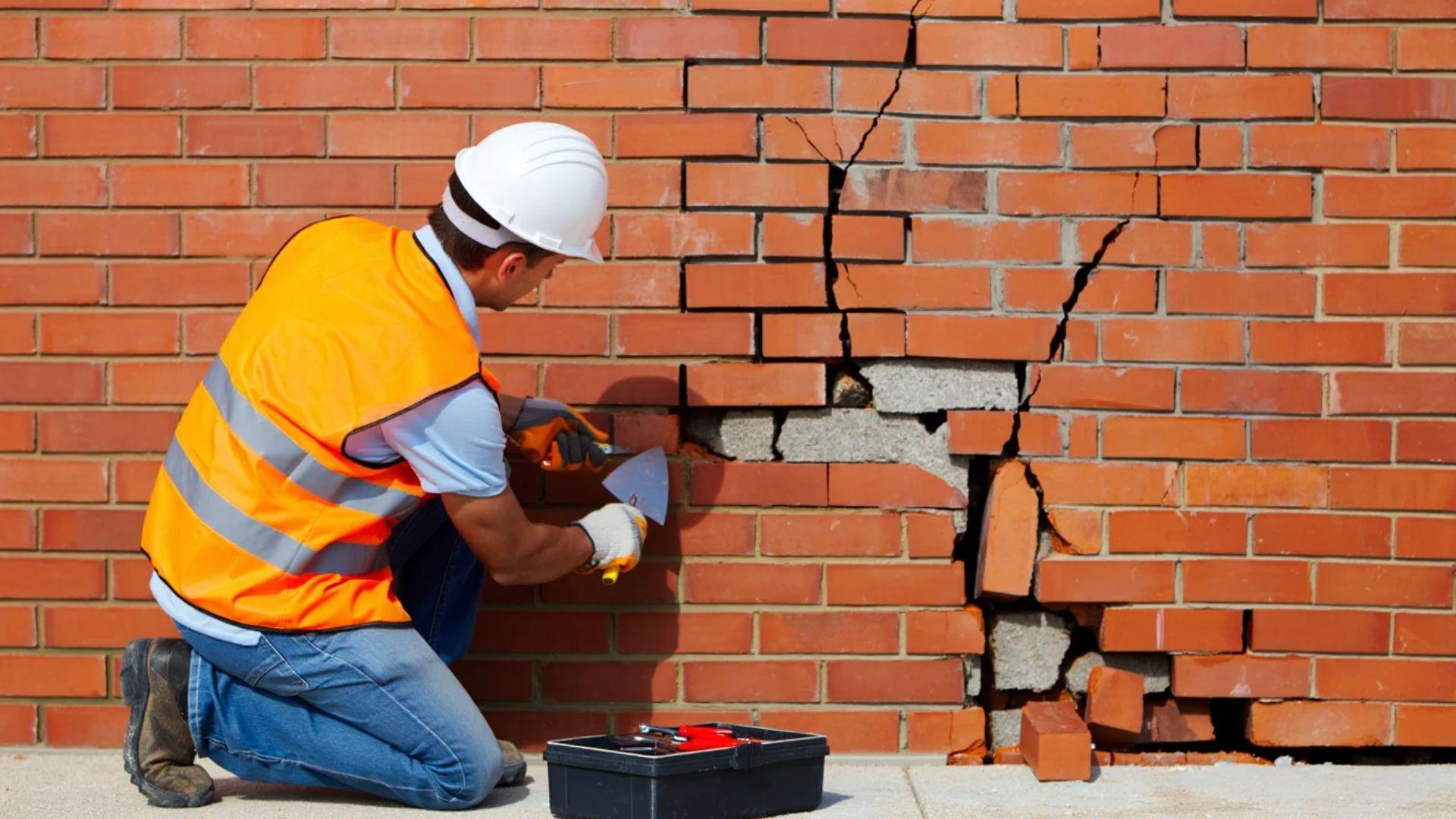
Some brick foundation problems require professional expertise to ensure your family’s safety and proper repair results.
Signs of structural failure or rapid damage include large cracks, bowing walls, or multiple problems appearing quickly together.
Water intrusion or interior damage is often indicated by wet basements, mold growth, or damaged belongings resulting from foundation leaks.
Foundation movement or shifting becomes obvious when doors stick, floors become uneven, or gaps appear around windows.
The benefits of hiring a licensed expert include proper diagnosis, quality materials, insurance coverage, and warranties on completed work.
Professional contractors have specialized tools and experience that most homeowners lack for complex foundation repairs.
How to Prevent Future Foundation Problems?
Preventing brick foundation problems is much easier and cheaper than fixing them after they develop.
Simple maintenance habits protect your foundation investment and save you from expensive repairs down the road.
- Improve drainage and grading by ensuring water flows away from your foundation, rather than pooling against the walls.
- Maintain gutters and downspouts by cleaning them regularly and directing water at least six feet from your home.
- Regular inspections and sealing help you catch small problems early and protect mortar joints from water damage.
- Address small cracks early before they become major structural problems that threaten your home’s stability and safety.
- Monitor soil moisture around your foundation to prevent excessive drying or saturation, which can cause foundation movement.
These simple prevention steps take just a few hours each year but save thousands in repairs.
Think of foundation maintenance as an investment that protects one of your home’s most important structural elements.
Common Mistakes to Avoid
Brick foundation repair may seem straightforward, but homeowners often make costly mistakes.
Learning from these errors saves time, money, and future headaches.
- Ignoring small cracks and thinking they’ll fix themselves is a mistake, as even tiny cracks can let water in. They grow bigger during freeze and thaw cycles.
- Using the wrong mortar mix that doesn’t match your original bricks, since modern cement mortar is too hard. It can damage older, softer bricks.
- Rushing the repair job without proper preparation can lead to failed fixes, as skipping critical steps like cleaning or curing can result in inadequate results. Take your time with repairs.
- Trying to repair major structural damage as a DIY project, but the foundation settlement requires professional help. Large cracks affect your home’s safety.
Foundation work significantly impacts the stability and safety of your entire home.
Have you spotted any warning signs in your brick foundation that need attention?
Wrapping It Up
Brick foundation repair demonstrates that taking action early protects both your family’s safety and your most significant investment.
From minor mortar patching to major structural reinforcement, proper repairs prevent small problems from becoming dangerous disasters.
Regular maintenance habits, such as improving drainage, cleaning gutters, and addressing small cracks, can save thousands in repairs.
Don’t wait until foundation problems threaten your home’s structural integrity before taking protective action.
Professional contractors offer expertise, warranties, and peace of mind for complex repairs that exceed the capabilities of DIY projects.
Remember that your foundation supports everything above it, making proper maintenance one of your most important responsibilities.
Ready to protect your home’s foundation and ensure your family’s safety for years ahead?
Share your brick foundation repair experiences in the comments below!
If you’re interested in more Home Maintenance content, check out other blogs that might interest you.

